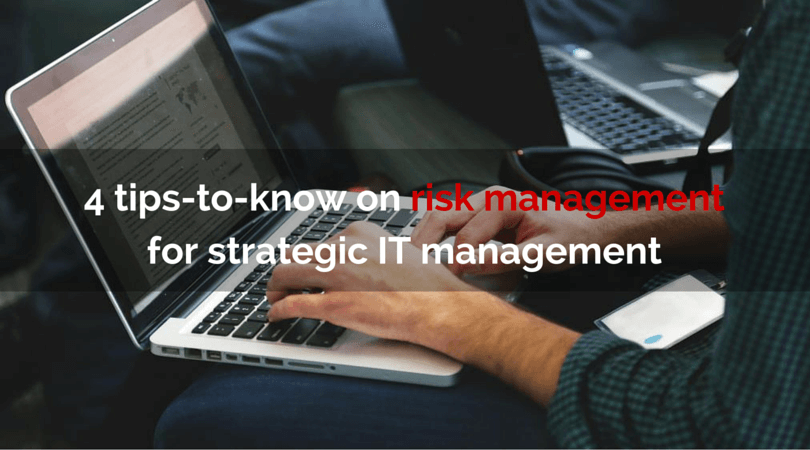“Risk is a built in, natural part of every business that exists from the very first second when you register your company name. When left unattended, the rising level of uncertainty will haunt you every night. If managed correctly, crisis and disasters can be avoided, risk-reward can be balanced and numerous benefits can be achieved.”
Information technology has become an inseparable part of every business. Likewise, risks are an omnipresent part of every business as well. What happens we put two and two together? Right, we get a ridiculous formula that has the potential to just wipe out a company’s life work in just a matter of weeks. Or days. Or hours for that matter.
Let me introduce you to my special, secret prophet skills: regardless of what business you run, it involves the use of a computer. I got that right, didn’t I -)
Here is a fact: a single computer is enough to potentially screw up your whole organization in certain cases, when IT related risks are mismanaged, mishandled, overlooked, approached lightly or simply left unattended.
This might sound ambiguous, but it doesn’t really matter how much IT infrastructure you have: a single computer or a five store building packed with thousands of servers, analytics and maintenance personnel. In both cases, you are technically exposed to the same threats including hardware and software failure, malware, viruses, outside attacks, spam and scam, human error, etc.
This is why it’s important to put IT risks under the same umbrella (if not on a throne above and absolutely not below) as financial, market and operational risks. Here is what you need to know.

1. IT risk management is an ongoing process
“The best defense is a good offense”
Business is like a civilized, modern world battlefield. When you are striving for innovation or change, you are basically attacking the enemy, hoping that you planned your attack well enough so that it will work out in the end. When you are keeping things nice and straight, you are defending, but as Mao Zedong taught us, defending won’t get you far. Oh and one more thing: the battle technically never ends.
On this battlefield, risks are like an ever moving target. If you aren’t paying attention to it 24/7, you will eventually lose sight of it and there is nothing more scary than not knowing when that target will reappear to strike you are undefended.
Keep an eye out for risks, and most importantly, make that lookout constant.
2. Learn to balance risk and reward
There is a Russian proverb that roughly translates into “Those who don’t take risks, don’t drink champagne”. Since champagne is considered a celebration drink, this means that if no risks are taken, there won’t ever be anything to celebrate.
Balancing risk and reward is the key to achieving your business objectives (and sometimes going beyond those) and really growing as an organization in terms of revenue, profit, size, market share and everything else.
It’s important to find that sweet spot when risks aren’t too high, but they also don’t cripple innovation and advancement, and try to maintain it. IT threats are increasing year over year and defense mechanisms are becoming scarcer. At the same time, technology to protect yourself is becoming more complex and expensive, finding competent staff gets more difficult and laws and regulations threaten to impose severe penalties if you “break the rules”.
It’s important to invest in strategic aspects like employee education, developing the skills of your risk management team and strengthening infrastructure to have some ongoing protection intact, while also being able to focus on expansion.
3. Prioritize risks
Just like not all opportunities are created equal (some are always better than others) not all risks are created equal as well. It might be very costly to try and protect yourself from everything at once (in fact, you will never have enough money to make yourself 100% secure and honestly, even if you do, it’s not worth it).
On the other hand, careful assessment and analysis will help understand what areas are more exposed to potential harm than others. Your top priority will be to secure the most threatened areas and leave the relatively safer areas as they are.
Remember that risks are constantly changing: what may seem secure today, may very well be threatened tomorrow, which takes us back to point number one. Monitor the risks constantly to effectively prioritize them at all times.
4. Risks are interrelated
A business has a lot in common with a human organism. If any part of it suffers damage, it leaves a trace on other areas as well. The same goes for risks. If you are threatened by a virus attack or malware, you will also face security risks and possible data loss. If your servers go down, it will affect sales and market share.
This is why it’s important to take into account any possible “side effects” during risk assessment to really understand what areas you should prioritize over others. To put it simply, losing a finger will not make as much of an impact as losing a whole arm.
At the end of the day, even if you follow everything correctly, it’s close to impossible to take into account every possible outcome. That will take way too much time, resources and effort and in the end, you will end up trying to protect yourself from stuff that isn’t even close to harming you, and doing nothing to grow your business.
IT risk management is like a dance with swords: Do it right and you will receive looks of admiration from your audience. Do it wrong though, and you will only end up harming yourself.
Are you a good sword dancer? Share your IT risk management experiences with us in the comments!
Follow us



